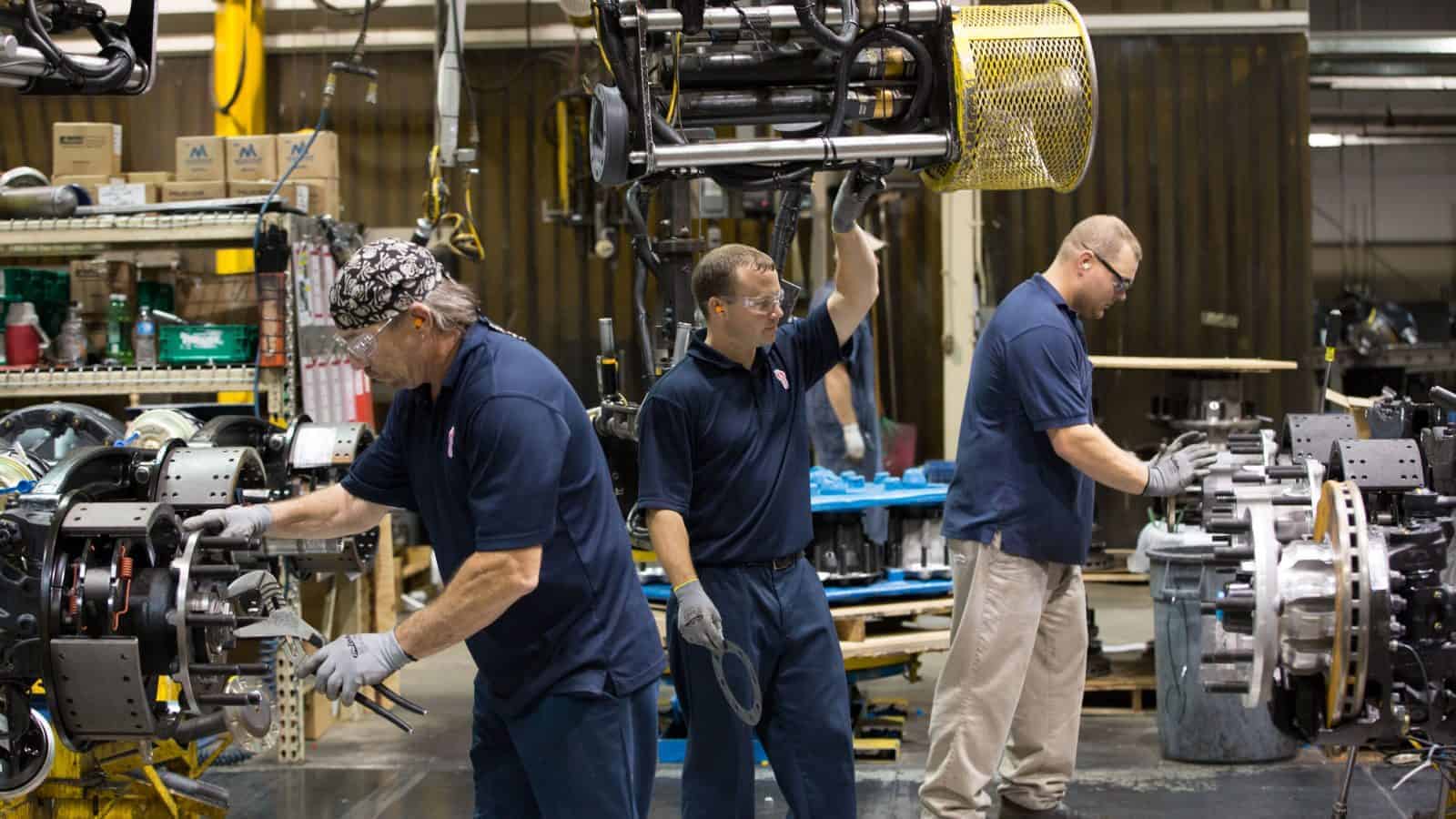Previewing the State of the Union

With President Biden set to deliver the State of the Union address Thursday, manufacturing is likely to be in the spotlight once again. At the NAM, we will be listening closely for our key priorities—those that have been achieved and those still in progress.
Promises kept: President Biden has been a partner on a range of issues that are key to manufacturers across the United States. We hope he will outline how pro-growth legislation has helped set the stage for manufacturing growth, with industry employment reaching a 15-year high.
- CHIPS Act: The CHIPS and Science Act marked a major push to boost manufacturers’ competitiveness, supporting large and small businesses up and down the supply chain by investing in domestic semiconductor production and funding programs to support the STEM workforce, advanced technology development, excavation of critical minerals, clean energy and more.
- Bipartisan Infrastructure Bill: President Biden secured a bipartisan $1.2 trillion infrastructure bill, a long-sought, major achievement for manufacturers throughout the country, offering transformational upgrades and significant investments in America’s manufacturing capabilities.
- Inflation Reduction Act: Some of the provisions in the Inflation Reduction Act supported manufacturers across the United States, with direct investments and tax credits generating a major increase in manufacturing construction and jobs.
- Ukraine: The Biden administration has been unwavering in its support of Ukraine. The NAM—which in March 2022 passed a unanimous resolution denouncing Russia’s invasion of the country—has kept the pressure on Congress to pass the stalled Ukraine aid bill.
Progress to come: But this progress will be undermined if the Biden administration continues to issue onerous regulations and call for policies that make it harder to innovate, invest and expand in America. The NAM is working hard to push back against items that would harm manufacturers and encourage the president to refrain from pursuing policies that will make us less competitive.
- Taxes: The NAM is pushing back against any new taxes or attempts to increase tax rates on manufacturers, and we are pressing for tax policies that will make it easier to invest in the future—including the “tax trifecta” found in the recently House-passed Tax Relief for American Families and Workers Act. The NAM urges the Senate to approve these business tax provisions quickly.
- Protecting intellectual property: Late last year the administration proposed invoking “march-in” rights to seize the patents of any products it deems too costly—if those innovations were developed in any part with federal dollars. This move, which would open the door to similar actions in other sectors of manufacturing, would undermine manufacturers’ IP rights, disincentivize early-stage entrepreneurship and dissuade capital investment, all of which could jeopardize our ability to develop future cures. This is just one example of how actions that undermine manufacturers’ IP can have dangerous unintended consequences.
- Regulations: Burdensome rules—such as the tighter National Ambient Air Quality Standards from the Environmental Protection Agency and the Department of Energy’s recent freeze of liquefied natural gas export permits—are preventing manufacturers from creating jobs and harming U.S. competitiveness. We need to end the regulatory onslaught and give manufacturers the chance to grow.
- Energy: Manufacturers in America are at the forefront of the planet’s work to reduce emissions and promote sustainable energy. But to be effective, we need to embrace an all-of-the-above energy strategy that uses the fuel we have while developing the tools we need.
- Immigration: Immigration and border security reforms must be a priority for the administration and Congress. Inaction poses significant economic risks—especially at a time when manufacturers have 600,000 open jobs. Manufacturers are leading on bipartisan solutions, like those found in our A Way Forward plan.
The last word: “Our commitment is to work with anyone, and I truly mean anyone, who will put policy—policy that supports people—ahead of politics, personality or process,” said NAM President and CEO Jay Timmons. “Because here’s what I know: Manufacturers are building an incredible future for our country and our world. And we need partners in the federal government who will work with us to reduce burdens on manufacturers and manufacturing workers, rather than creating barriers to our success.”
Learn more: For more information on the state of manufacturing, check out the 2024 NAM State of Manufacturing Address here.
Arizona: Manufacturing’s Crossroads
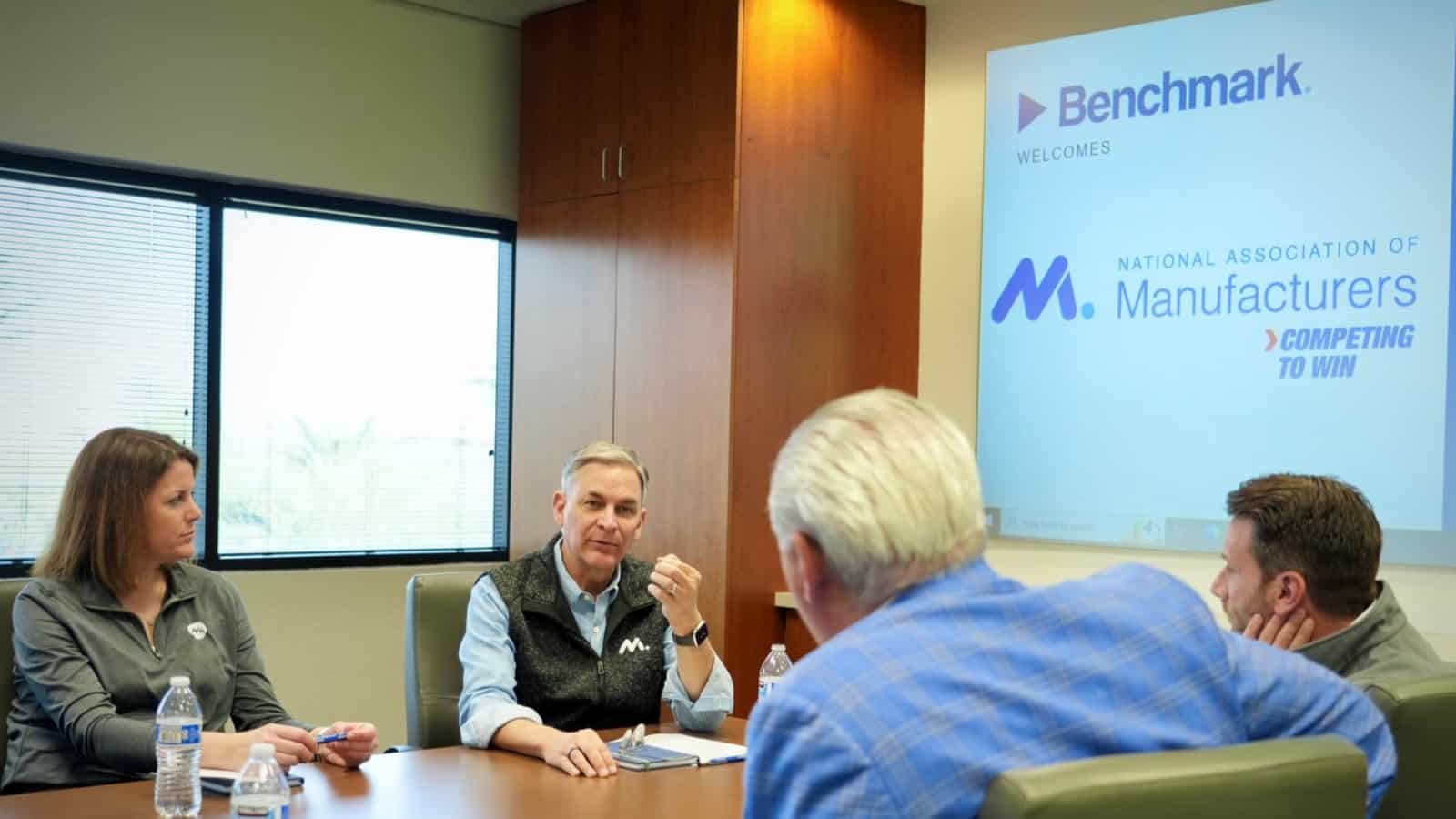
In the heat of Arizona’s “Silicon Desert” and surrounding communities, the future of America’s global competitiveness and climate goals aren’t just being forged—they also hang in the balance.
Last week for the first time in 2024, the NAM brought its Competing to Win Tour to Arizona, and that stark contrast between the status quo and the probable future was on display in Phoenix at global semiconductor equipment manufacturer Benchmark and small manufacturer Valley Forge & Bolt and at Resolution Copper in Superior.
- NAM President and CEO Jay Timmons, Manufacturing Institute President and Executive Director Carolyn Lee—who leads the NAM’s 501(c)3 workforce development and education affiliate—and Arizona Chamber of Commerce & Industry President and CEO Danny Seiden met with local manufacturers to gain their perspective and insights.
Why it matters: The Biden administration and Congress have secured key measures to bolster manufacturing in the U.S., including the NAM-championed CHIPS and Science Act and tax credits in the Inflation Reduction Act to manufacturers investing in advanced production and energy projects. But raw material, workforce and tax and regulatory policy challenges threaten to undermine policy aspirations.
Silicon Desert expansion: With the CHIPS and Science Act poised to transform the sector, Benchmark President and CEO Jeff Benck and Executive Vice President and Chief Operating Officer Dave Valkanoff led the tour of their state-of-the-art Phoenix facility.
- In a good spot: Benchmark is well-positioned for the coming growth in semiconductor equipment demand. It is focused on securing its workforce and navigating a complex regulatory landscape to maximize the opportunity.
- Workforce woes: Even with the NAM and the MI’s Benchmark-supported Creators Wanted campaign boosting the industry’s image and the MI’s FAME initiative training thousands of technicians, finding skilled labor remains the top challenge. Benchmark advances earn-and-learn programs and partnerships with Arizona State University and community colleges to help fill the pipeline, actions that, according to Lee, “can help change the game.”
- Red tape delays: Regulatory hurdles pose obstacles. Benchmark seeks streamlined permitting and sensible rules to maintain their global edge.
- Bullish outlook: Benck is optimistic about the future of U.S. manufacturing and semiconductor demand. Investments in people and technology position the company well to deliver the next generation of innovation.

Taxes and immigration: The NAM’s return visit to Valley Forge & Bolt, after a stop last year with Sen. Kyrsten Sinema (I-AZ), shone a spotlight on the real-world impact of stalled tax policy and the urgent need for reform.
- Valley Forge & Bolt saw record sales in 2023 thanks to 2017 tax reforms boosting its equipment upgrades. Now, with provisions like full capital investment expensing stalled in Congress, orders have slowed.
- CEO Michele Clarke and COO Bret Halley made the case for R&D expensing, interest deductibility and a return to full capital investment expensing. Without these, they said, job growth and America’s manufacturing competitive edge are at risk.
- Skilled workers needed: Despite its success, Valley Forge says finding skilled workers is a constant struggle. Immigration reform is a must to secure the right talent pipeline, said Clarke. “Did you notice our engineers? Most of them are under 30 because we’re snatching them right out of college,” added Clarke. “The engineering talent in this country is dwindling, and we’re not authorizing enough green cards. I, myself, was a green card holder before I became a citizen.”

Policy roadblocks: The NAM’s visit to Rio Tinto’s Resolution Copper site highlighted the urgency of permitting reform in the face of critical mineral needs.
- Copper’s critical role: Copper is essential for clean energy. Electric vehicles, solar power grids and wind turbines all demand huge quantities. Yet, the U.S. remains heavily reliant on imported copper, jeopardizing progress.
- Massive potential: The domestic solution lies within the stalled Resolution Copper mine. With its potential to supply 25% of U.S. copper demand, it’s poised to be a key piece of the puzzle.
- Project in limbo: Despite a 350-strong workforce modernizing and maintaining the mine, permitting delays stifle the project’s full impact.
- Sustainable practices: “Resolution Copper is the future of eco-conscious mining,” said NAM Managing Vice President of Brand Strategy Chrys Kefalas, who toured the site. “Their team innovates sustainable practices, leads in water conservation and even supplies 7 billion gallons of water to Arizona farms. And what is more, it isn’t just the facts of the matter or what you saw that drives this point home, but the people who have worked on the site for years make all that clear with the pride they have about the project and their determination to see Resolution Copper through to making lives better for everyone.”
- Jobs and growth: Led by President and General Manager Vicky Peacey, the project promises to contribute $1 billion annually to the economy and more than 1,500 Arizona jobs. “This is about people, jobs and supply chains; and it’s also about realizing clean energy ambitions at the speed and scale that climate goals demand,” said Kefalas.

The bottom line: “The future of U.S. manufacturing might hinge on these contrasting stories. Are we a nation that champions innovation, attracts and keeps the brightest here, supports our manufacturers and tackles climate goals with homegrown solutions, or one that stalls progress in its own backyard,” said Timmons.
- “Arizona is at the epicenter of American manufacturing’s next chapter, and with smart policies and fewer unforced errors at the federal level, we can clear the runway for growth,” added Seiden.
State of Manufacturing: Strong, But Not Guaranteed
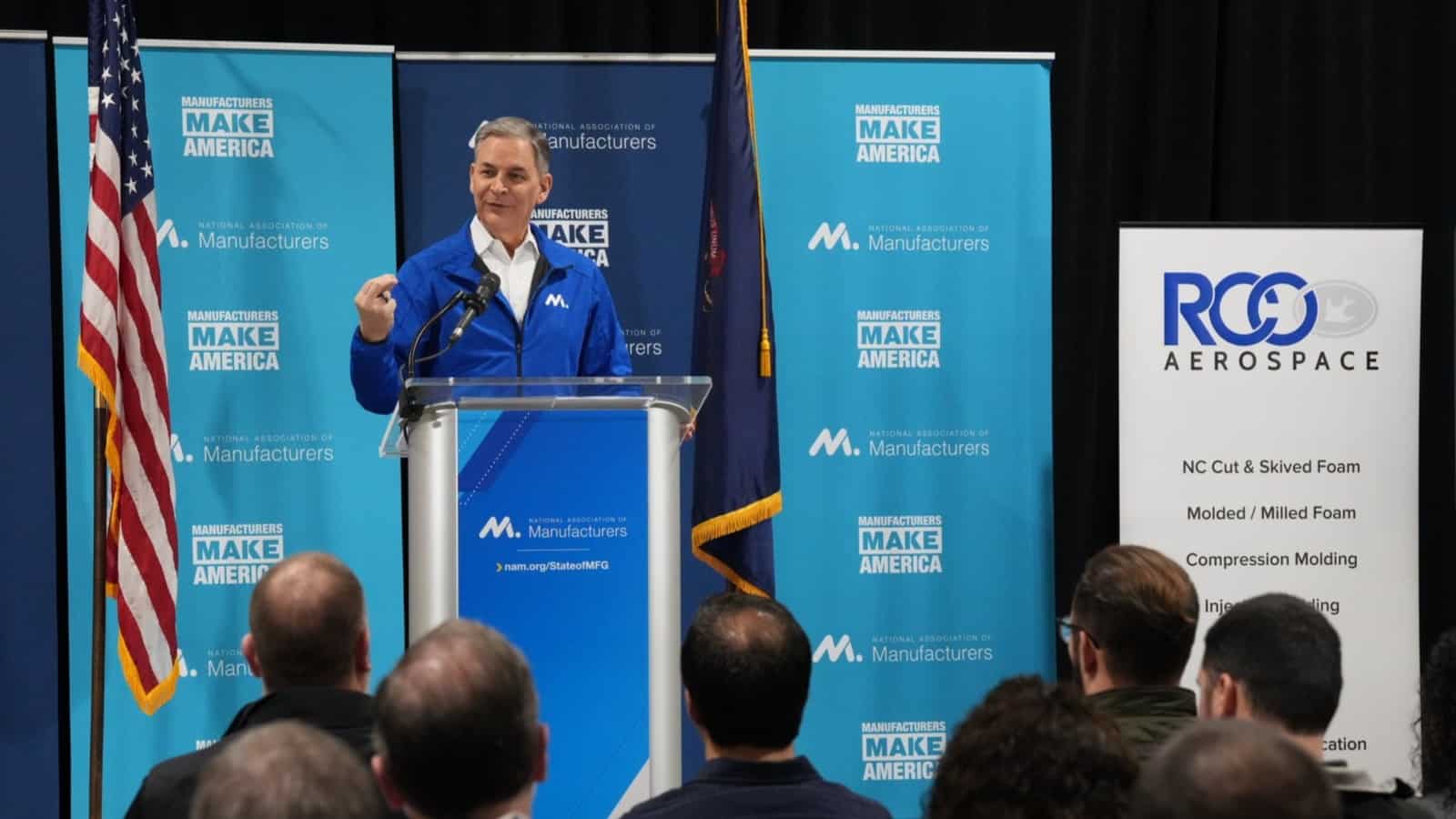
What’s the state of manufacturing in the U.S.? Strong and resilient—but under threat.
That was the message delivered by NAM President and CEO Jay Timmons and other speakers at the NAM’s 2024 State of Manufacturing Address at RCO Engineering in Roseville, Michigan, on Thursday.
- Attending the address were nearly 100 RCO Engineering team members—some of whom are second- or even third-generation manufacturing workers—as well as local education leaders, including Macomb Community College President James O. Sawyer IV and Macomb Intermediate School District Superintendent Michael R. DeVault.
- The address was the keystone event of this week’s launch of the 2024 Competing to Win Tour, an opportunity to visit local manufacturers and report on where the industry stands at the start of 2024.
A place of strength: “The state of the manufacturing industry depends on the people in it,” Timmons said in remarks covered by POLITICO Influence (subscription). “And we are now 13 million strong—the largest in more than 15 years. If we can continue on this trajectory, this resurgence, imagine what the state of manufacturing might look like in 2030.”
- Johnson & Johnson Executive Vice President and Chief Technical Operations & Risk Officer and NAM Board Chair Kathy Wengel echoed that sentiment in her opening remarks. “Manufacturers are improving the quality of life for everyone. … Together, we can lead the way.”
- And Michigan Manufacturers Association President and CEO John Walsh told the audience at RCO Engineering, “You are making parts here that are going everywhere. It’s a phenomenal story for us in Michigan. It not only helps you as employees here, but it helps your families, it helps your communities. It builds our state. It builds our nation.”
- “Manufacturing … is an industry that is vital to our economic competitiveness,” said Macomb County Executive Mark Hackel. “In Macomb County, we’re not just witnessing the growth of manufacturing; we’re actively contributing to it. What we are doing here is creating an environment where innovation thrives and where manufacturers can grow as well as compete.”
- RCO Engineering General Manager Jeff Simek agreed. “The manufacturing brand is coming back, and it’s coming back alive—and you guys are a big, huge piece of that,” he said to loud applause.
Fork in the road: But continued manufacturing strength isn’t guaranteed, Timmons said. Rather, it’s in large part contingent on sound policy decisions by U.S. leaders.
- “We will head in the wrong direction if Congress lets taxes go up on small businesses when rates expire next year,” Timmons said. “Or if they hit you with even more regulations—regulations even harsher than ones they have in Europe. Or if they fail to solve the immigration crisis because they put politics over good policy. Or choose trade barriers rather than trade agreements, or … abandon our allies overseas and put our national security at risk.”
- The recent regulatory onslaught by federal agencies—which Timmons discussed with Fox Business earlier this week—must stop and be replaced with sensible rulemaking done in cooperation with manufacturers, he said.
- He cited the Environmental Protection Agency’s recently finalized, overly stringent standard for particulate matter and the Biden administration’s decision to freeze liquefied natural gas export permits. This “forc[es] our allies, like Europe and Japan, to buy dirtier energy from countries we can’t trust, potentially enriching the likes of Russia … undercut[ting] our most basic national security objectives,” Timmons said.
No new taxes: The NAM’s message to Congress on taxes is simple: “No new taxes on manufacturers in America,” Timmons said.
- “And while we’re at it, Congress should bring back some of the tax policies that made it easier for manufacturers to invest in the future.”
On immigration: The U.S. needs a common-sense solution to immigration, and it needs it now, Timmons said.
- While manufacturers may not like every piece of the bipartisan border deal that was recently killed in the Senate, “here was my test: Does it make us more secure than we are today? Yes. Does it make our workforce stronger than it is today? Yes. And does it help our allies overseas? Yes,” said Timmons.
Come what may: No matter what the November elections bring, manufacturers will continue to do the jobs so many people depend on them to do, Timmons concluded.
- “Our commitment is to work with anyone, and I truly mean anyone, who will put policy—policy that supports people—ahead of politics, personality or process. We will stand with you if you stand with us in advancing the values that have made America exceptional and keep manufacturing strong.”
Reports: Obesity a Challenge for Manufacturing Employers

Obesity is costing U.S. companies and their workers hundreds of billions of dollars a year, according to a new report, the findings of which are in line with those of a 2023 NAM report on employer-sponsored health care.
What’s going on: “Obesity and overweight are estimated to have caused a staggering $425.5 billion in economic costs to U.S. businesses and employees in 2023, according to a report released by GlobalData Plc, a leading data and analytics company,” MarketScreener reports.
- The findings of the GlobalData report, “Assessing the Economic Impact of Obesity on Employers: Identifying Paths Toward Work Force Health and Well-Being,” are consistent with those of a recent NAM report, “ Manufacturers on the Front Lines of Communities: A Deep Commitment to Health Care ,” which notes significantly higher health care costs for individuals who are obese or carry excess body weight.
- “These additional costs account for $170 billion to $200 billion in annual spending in the U.S., making [these conditions] a significant cost for employers,” according to the NAM report.
Why it’s important: Obesity can make workers more prone to absenteeism (taking time off) and presenteeism (being less productive while on the job), both of which come with a significant price tag, according to the reports.
- Some 46.1% of manufacturer respondents to an NAM survey said obesity affected their workplace productivity and employees’ ability to complete their job functions.
- Absenteeism costs employers $82.3 billion each year, with presenteeism accounting for an additional $160.3 billion, according to the GlobalData report.
Impact on manufacturing: The economic impact of excess body weight on manufacturing is the fourth highest of the seven industries examined by GlobalData, at $44.5 billion annually.
What can be done: Manufacturers care deeply about ensuring their employees have access to high-quality, affordable primary care providers who can help employees manage their weight through personalized interventions like diet, exercise, behavior modification, medications and surgery.
The last word: “Manufacturers support efforts to continue to destigmatize these chronic health challenges and approach them like any other condition so that workers and their families feel comfortable choosing from the full suite of available treatment options in order to live healthier and more productive lives,” said NAM Vice President of Domestic Policy Charles Crain.
Primary Goals: NAM Hits the Road in 2024
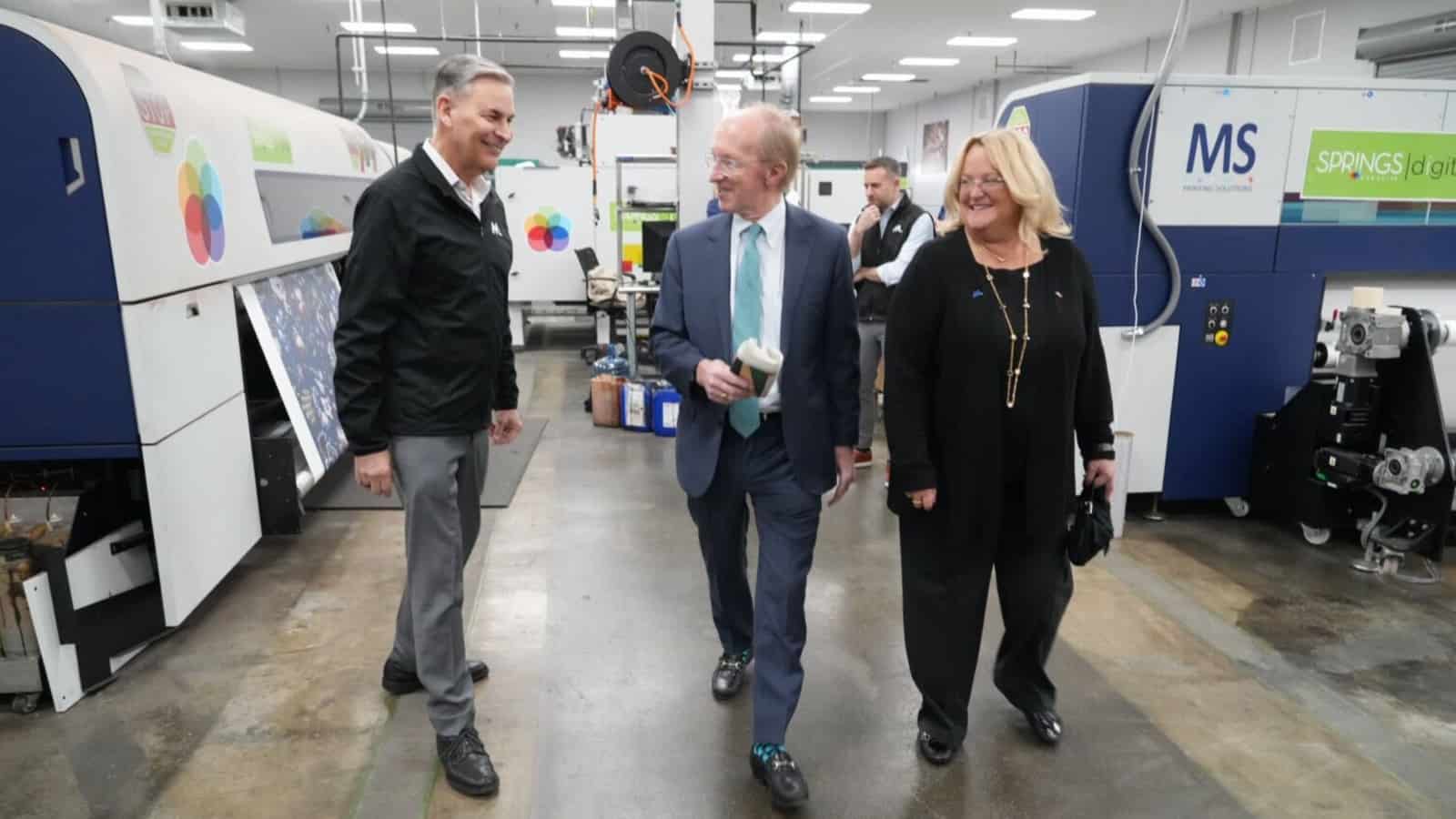
As candidates look to claim the support of manufacturers in 2024, the NAM launched its year-long 2024 Competing to Win Tour in South Carolina, days ahead of the South Carolina GOP primary.
- The tour spotlights the issues critical to winning not just manufacturers’ votes but also more manufacturing in the U.S.
Why it’s important: “We came to South Carolina to showcase the people and stories behind our industry and to translate their perspectives into action that will make our industry and country stronger,” said Johnson & Johnson Executive Vice President and Chief Technical Operations & Risk Officer and NAM Board Chair Kathy Wengel, who joined NAM President and CEO Jay Timmons, South Carolina Chamber of Commerce President and CEO Bob Morgan and South Carolina Manufacturers Alliance President and CEO Sara Hazzard on the first day of the tour.
- “Building these strong relationships beyond Washington, D.C., in the cities and states driving our sector deepens our understanding of regional challenges and reinforces the NAM as the leading voice representing all manufacturers, large and small,” Wengel added.
The launch: The tour began at Milliken & Company’s headquarters in Spartanburg on Wednesday, a poignant reminder of the importance of just one global technology-based manufacturer to lives, innovation and progress.
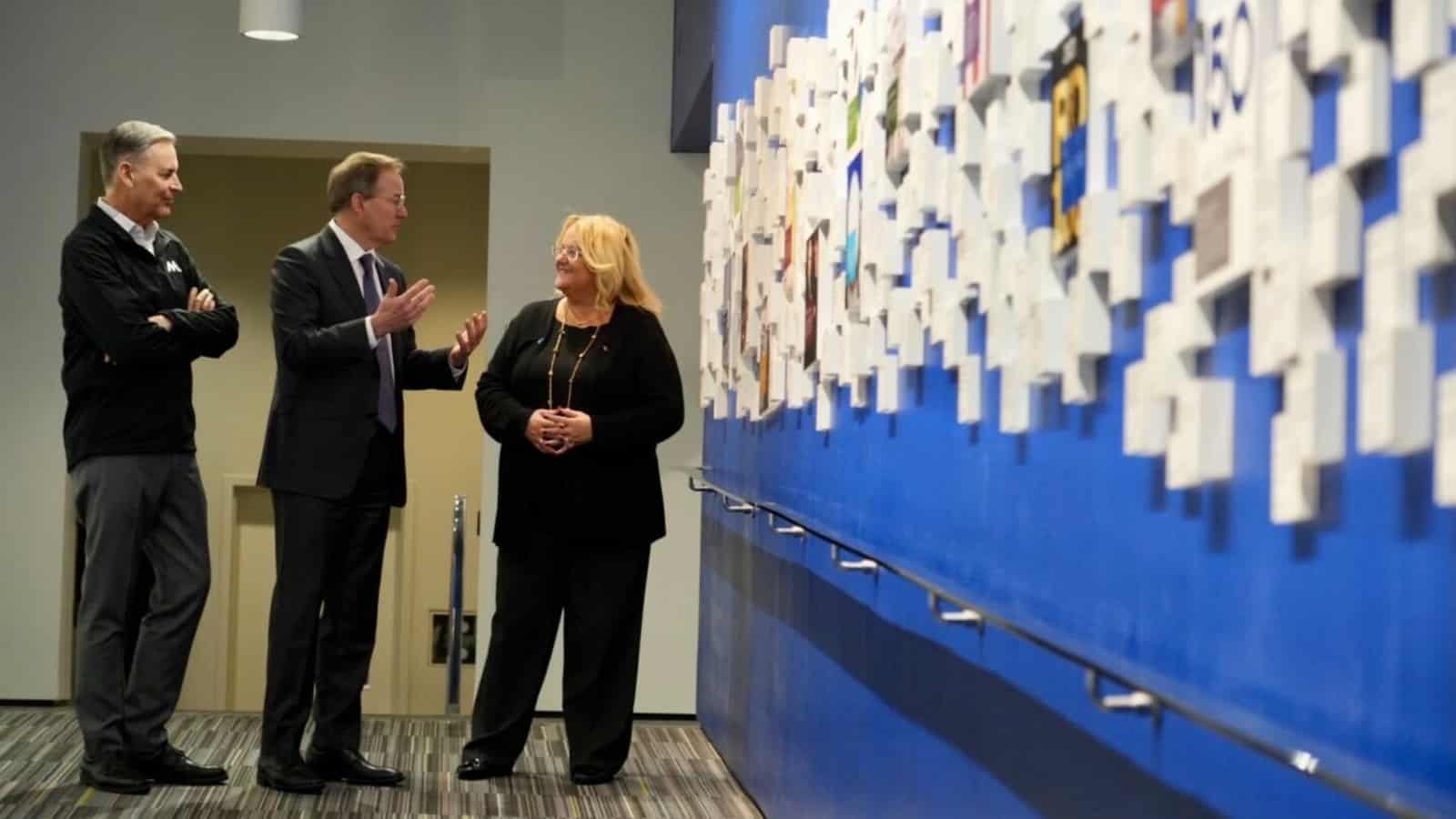
- The company’s 3,200 associates in the Palmetto State, as well as its broader U.S. and global team, make everything from safety gear and wound dressings and bandages to eco-conscious materials and technological innovations, such as digital printing, flooring, sustainable coating additives and more.
- “The average person touches about 30 to 50 [Milliken products] a day,” said Milliken President and CEO Halsey Cook.
- “Milliken embodies what we believe: manufacturing makes a positive difference. Their commitment to sustainability, ethics (named a World’s Most Ethical Company 17 years running) and a people-first workplace create a ripple effect,” said Timmons. “It’s why we need everyone supporting the success of manufacturers in South Carolina and the United States—to empower companies just like Milliken and help us grow more of them right here in America,” Morgan emphasized.
- “Milliken is a remarkable brand ambassador for the entire manufacturing industry in the United States,” summed up NAM Managing Vice President of Brand Strategy Chrys Kefalas. “As Michael Brown, Milliken’s executive vice president of operations, conveyed to us, the company is showing that digital transformation and artificial intelligence can be a force for good, helping its people leverage data analytics, for example, accelerating innovation and making modern manufacturing even more exciting for the next generation to be a part of.”
A boom story: Springs Creative Products Group CEO Derick Close, who heads several small enterprises in South Carolina, brought the NAM tour to Fort Lawn, South Carolina, where state-private partnerships and sound competitiveness policies have led to a boom in manufacturing investment and jobs.
- According to Close, recent investments in the community exceed $2.5 billion and stand to add 1,500 new jobs.
- Close, who is an economic development champion for South Carolina, took time to brief the group on how the area is ground zero as well in the story of the revival—and revolution—happening for the U.S. textile manufacturing sector, showing that U.S.-based textile manufacturers can compete against the rest of the world at quality, speed and price, so long as misguided policies don’t impede current advances. Springs Creative’s digital printing facility, which the NAM toured, is just one example. Springs Creative produces fabrics for such companies as Disney, Tempur-Pedic and Walmart.
- An added highlight of Close’s showcase was a tour of the new 1.5-million-square-foot, $423 million E. & J. Gallo wine and spirits production and distribution center—a testament to U.S. ingenuity and the more than 275 jobs it’s already created (with more on the way) to produce the best-selling spirit in the U.S.
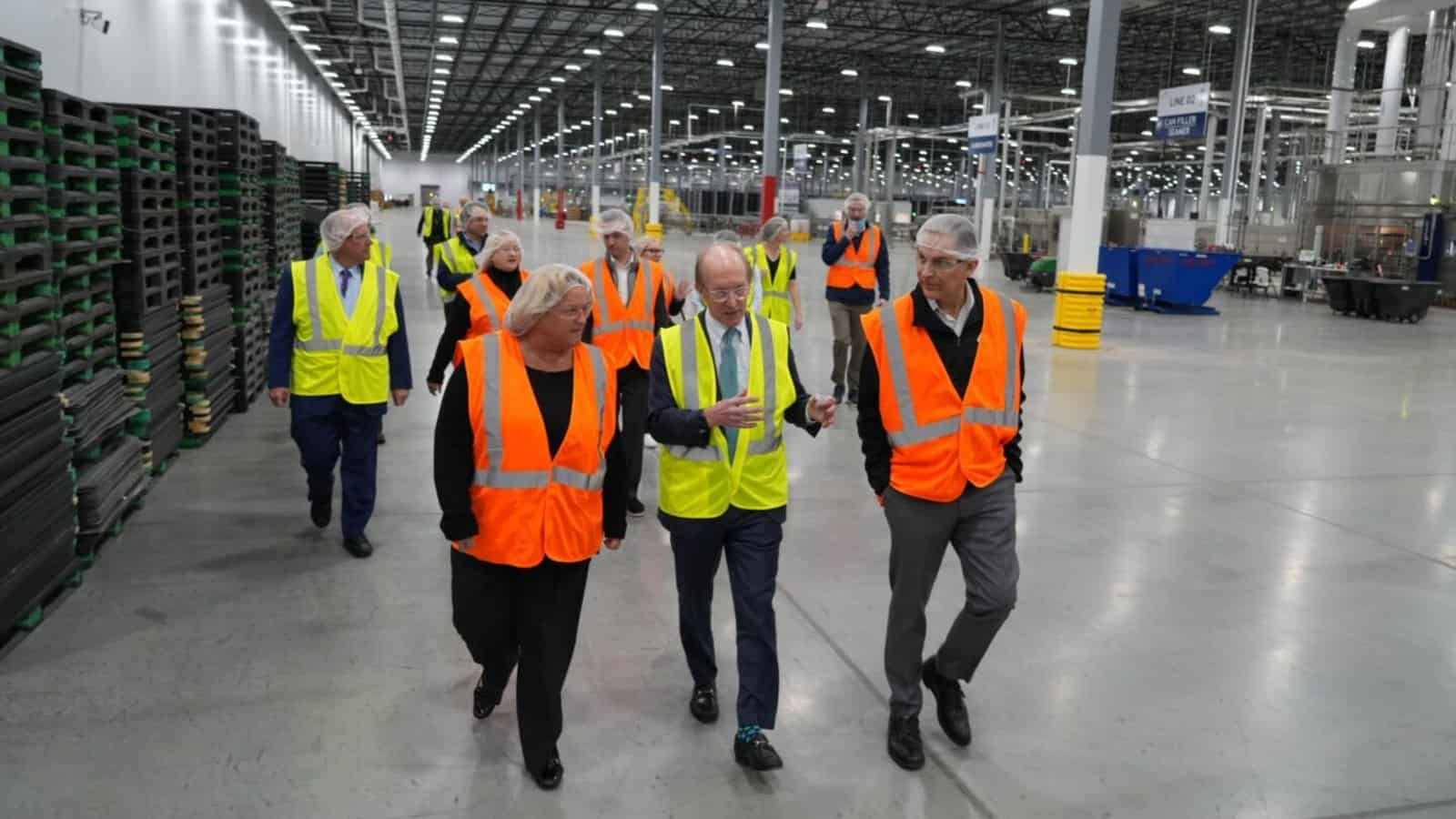
The message: The discussions at Milliken and Springs Creative focused on the need for policies that support manufacturing’s growth, from R&D incentives and competitive taxes to sensible regulations, resilient supply chains and permitting reform, to workforce development, including immigration reform, and energy policy.
The platforms: As newsrooms dwindle, the NAM is stepping into the breach, using its platforms, like NAM.org, social media and its email newsletters, including Input, to amplify manufacturing’s narrative. It’s a bid to ensure that as policymakers and candidates court manufacturers, they’re armed with real stories and concrete policy needs from the ground.
Looking ahead: The tour will continue across the United States, gathering insights and stories to bolster the NAM’s advocacy efforts. Next up: the Competing to Win Tour brings the NAM State of Manufacturing Address to Roseville, Michigan, as well as to Sanders Chocolate and Triumph Gear Systems in Macomb County on Thursday.
NAM Leadership Kicks Off Competing to Win Tour in South Carolina
Washington, D.C. Today, the National Association of Manufacturers kicked off its 2024 Competing to Win Tour in South Carolina. NAM President and CEO Jay Timmons and NAM Board Chair and Johnson & Johnson Executive Vice President and Chief Technical Operations & Risk Officer Kathy Wengel visited Milliken & Company and Springs Creative Products Group to hear from team members on the shop floor on the issues impacting their businesses.
“Manufacturers are fueling the U.S. economy and driving innovation to create a better future for everyone. We’re here in South Carolina to showcase the people and stories behind our industry, and to translate their perspectives into action that will make our industry and country stronger. Building these strong relationships beyond Washington, D.C., in the cities and states driving our sector deepens our understanding of regional challenges and reinforces the NAM as the leading voice representing all manufacturers, large and small,” said Wengel.
Tomorrow, Timmons will deliver the 2024 NAM State of Manufacturing Address, in which he will provide the industry’s assessment of manufacturing in the United States, as candidates from all sides work to claim the manufacturing vote in the 2024 election.
“For more than a decade, the annual NAM State of Manufacturing Address has focused the nation’s attention on the industry that is the backbone of the American economy, and we are on this tour to hear from the people making decisions on how to grow their businesses every day. Lawmakers from all parties want to claim they stand with manufacturers, but we judge them not by their words but by their deeds. So manufacturers across America have a message for Washington: we are here to hold all candidates and leaders accountable. It takes leadership from both parties to ensure manufacturers have the conditions to thrive and invest in communities across the country. If they fail to act, they will fail the 13 million people who make things in America,” said Timmons.
Timmons will also highlight the challenges facing manufacturers in America and the urgent need to enact a competitiveness agenda that addresses pressing issues, including the looming tax hikes on small manufacturers, the need to expand trading opportunities, the regulatory onslaught from federal agencies, the failure of Congress to address immigration reform and the threats to our energy security and supply chains.
-NAM-
The National Association of Manufacturers is the largest manufacturing association in the United States, representing small and large manufacturers in every industrial sector and in all 50 states. Manufacturing employs nearly 13 million men and women, contributes $2.85 trillion to the U.S. economy annually and accounts for 53% of private-sector research and development. The NAM is the powerful voice of the manufacturing community and the leading advocate for a policy agenda that helps manufacturers compete in the global economy and create jobs across the United States. For more information about the NAM or to follow us on Twitter and Facebook, please visit www.nam.org.
Can a Factory Offer Flexible Work Schedules?
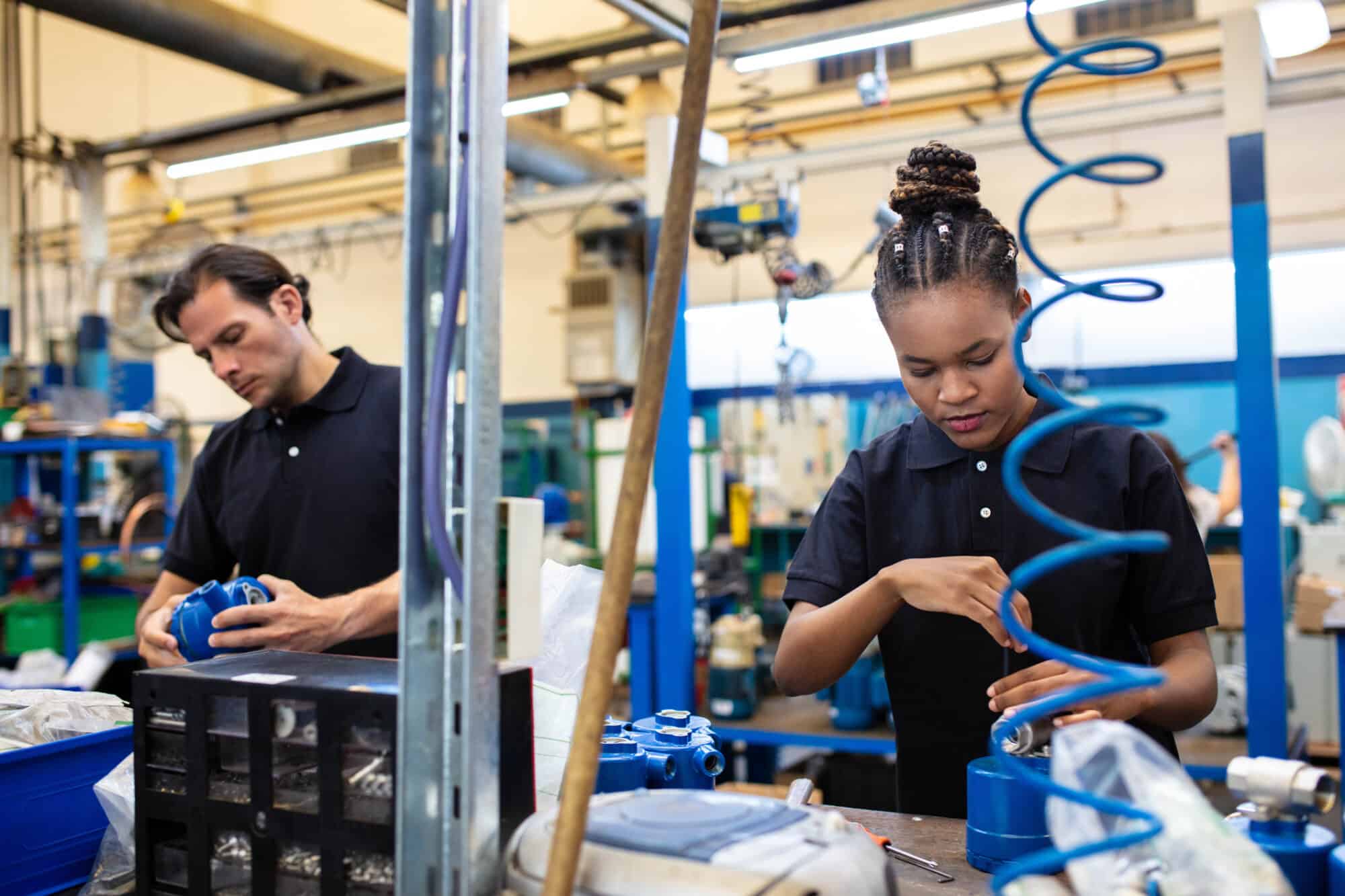
Manufacturing operations are meticulously scheduled and dependent on consistent in-person labor—so how can employers in the sector give workers the flexibility that many want?
With competition for workers remaining fierce, it’s a question that the Manufacturing Institute (the NAM’s workforce development and education affiliate) has started to tackle. Now, manufacturers looking into providing flexible options can consult a new MI whitepaper that draws on real companies’ experiences and decision-making processes.
The new reality: Flexibility is a high priority for workers nowadays, as the MI’s own research shows.
- “Nearly 50% of manufacturing employees cite flexibility as a reason they stay with their employer, with 63.5% reporting that they would look for more flexibility in their next role if they were to leave their current company.”
Figuring it out: So how are manufacturers adjusting? According to a working group of 17 companies convened by the MI, many manufacturers have started by surveying their workers and talking through options with them.
- While feedback from current employees is often a prime motivator for companies considering flexible work arrangements, some manufacturers also pursue them to attract a wider pool of prospective workers—including parents of young children, who may put a premium on flexibility.
What’s on offer: As feedback from the working group showed, manufacturers are considering a wide range of creative options. The whitepaper cites several intriguing examples, which should give other manufacturers ideas for their own operations.
- One manufacturer in the group was trying out different shift options, remarking that they’re “exploring 4–9s and 4–10s primarily as well as adding a Sunday second shift and having folks on rotating shifts.”
- Other companies organized teams of “floaters.” At one firm, these employees work limited hours on different shifts and acquire a large variety of skills. While not full-time, such positions offer a viable option for workers in search of considerable flexibility.
- Shift swapping was another option under discussion, with one company allowing workers to swap up to a week at a time, so long as a supervisor approved.
How to get started: Check out the full whitepaper for more useful tips, including a toolkit to help companies start making these complex decisions on their own.
- Here is the recommended first step: “Identify the objectives that your company hopes to achieve in providing workplace flexibility by focusing on the challenges that you would like to solve, whether it’s increasing the number of applicants or reducing turnover and absenteeism. Establish your baseline by evaluating your company’s status on these metrics.”
- Manufacturing employers can learn more about effective approaches to flexibility for production employees at the MI’s upcoming workshop March 19–20 in Washington, D.C. Check out more details from the MI here.
The last word: As one working group participant said, “At our company, we’ve seen what workplace flexibility means for our production workers. The change in company culture is so valuable.”
House Passes NAM-Supported Tax Package

Manufacturers scored a major victory last night when the House passed a bipartisan tax package containing provisions critical to the industry.
What’s going on: The House voted 357–70 to pass the bipartisan Tax Relief for American Families and Workers Act. The bill includes three important manufacturing priorities:
- Restoring immediate R&D expensing for domestic research
- Reinstating full expensing (also known as 100% accelerated depreciation) for businesses’ capital investments
- Returning the U.S. to a pro-growth interest deductibility standard
What it means: The measure will enable manufacturers to invest in their businesses, create jobs and compete in the global marketplace.
- The bill is particularly important for small and medium-sized manufacturers, many of which experienced significant tax increases as a result of the expiration of these pro-growth provisions.
- “While it was once a paid expense, R&D is now a cost that many small businesses cannot afford,” said Carol Miller (R-WV), in a speech on the House floor last month.
- The overwhelming majority—89%—of respondents to the NAM’s Q4 2023 Manufacturers’ Outlook Survey said higher tax burdens on manufacturing would make it more difficult for them to hire, buy new equipment and expand their facilities.
What’s next: It’s critical that the Senate now also pass the measure, the NAM said.
- “Manufacturers thank [House Speaker Mike Johnson (R-LA)] and [House Ways and Means Committee Chairman Jason Smith (R-MO)] for their leadership in passing the Tax Relief for American Families and Workers Act—and the bipartisan work in the House and Senate to secure progress for America’s manufacturing workers,” said NAM President and CEO Jay Timmons in a social post Wednesday night. “Manufacturers are now counting on the Senate to act quickly to restore these provisions that are absolutely critical to strengthening America’s competitiveness and growth of manufacturing in America.”
- Added Ketchie President and Owner and NAM Small and Medium Manufacturers Group Chair Courtney Silver, “This just isn’t about numbers on my financial statements and my tax returns—this is about taking care of the people here [at Ketchie] and in communities across this country…. Let’s restore some common-sense tax provisions, and let’s support our American manufacturers across our country.”
House Passage of Tax Priorities a Win for Manufacturers, Counting on Senate to Act Swiftly
Washington, D.C. – Following House passage of the Tax Relief for American Families and Workers Act of 2024, National Association of Manufacturers President and CEO Jay Timmons and Ketchie President and Owner and NAM Small and Medium Manufacturers Group Chair Courtney Silver released the following statement:
“Manufacturers thank Speaker Johnson and Chairman Smith for their leadership in passing the Tax Relief for American Families and Workers Act—and the bipartisan work in the House and Senate to secure progress for America’s manufacturing workers,” said Timmons.
“Manufacturers are now counting on the Senate to act quickly to restore these provisions that are absolutely critical to strengthening America’s competitiveness and growth of manufacturing in America,” Timmons added. “We cannot afford to wait. The cost of delay or inaction will be measured in lost jobs and slower wage growth, along with investment ceded to other countries. Passing this legislation, however, will ensure that small manufacturers, who are the backbone of communities and foundation of America’s supply chain, can continue driving our nation forward.”
“When key tax provisions expired, it wasn’t just businesses like Ketchie that felt the pinch—it was our ability to support and create jobs that took a hit,” said Silver. “I thank Speaker Johnson and Chairman Smith for their efforts to ensure passage of the Tax Relief for American Families and Workers Act. This isn’t just about numbers on financial statements; it’s about taking care of people who make things in America and work at small manufacturing companies across our country.”
-NAM-
The National Association of Manufacturers is the largest manufacturing association in the United States, representing small and large manufacturers in every industrial sector and in all 50 states. Manufacturing employs nearly 13 million men and women, contributes $2.85 trillion to the U.S. economy annually and accounts for 53% of private-sector research and development. The NAM is the powerful voice of the manufacturing community and the leading advocate for a policy agenda that helps manufacturers compete in the global economy and create jobs across the United States. For more information about the NAM or to follow us on Twitter and Facebook, please visit www.nam.org.
NAM to Congress: Pass Crucial Tax Legislation Now
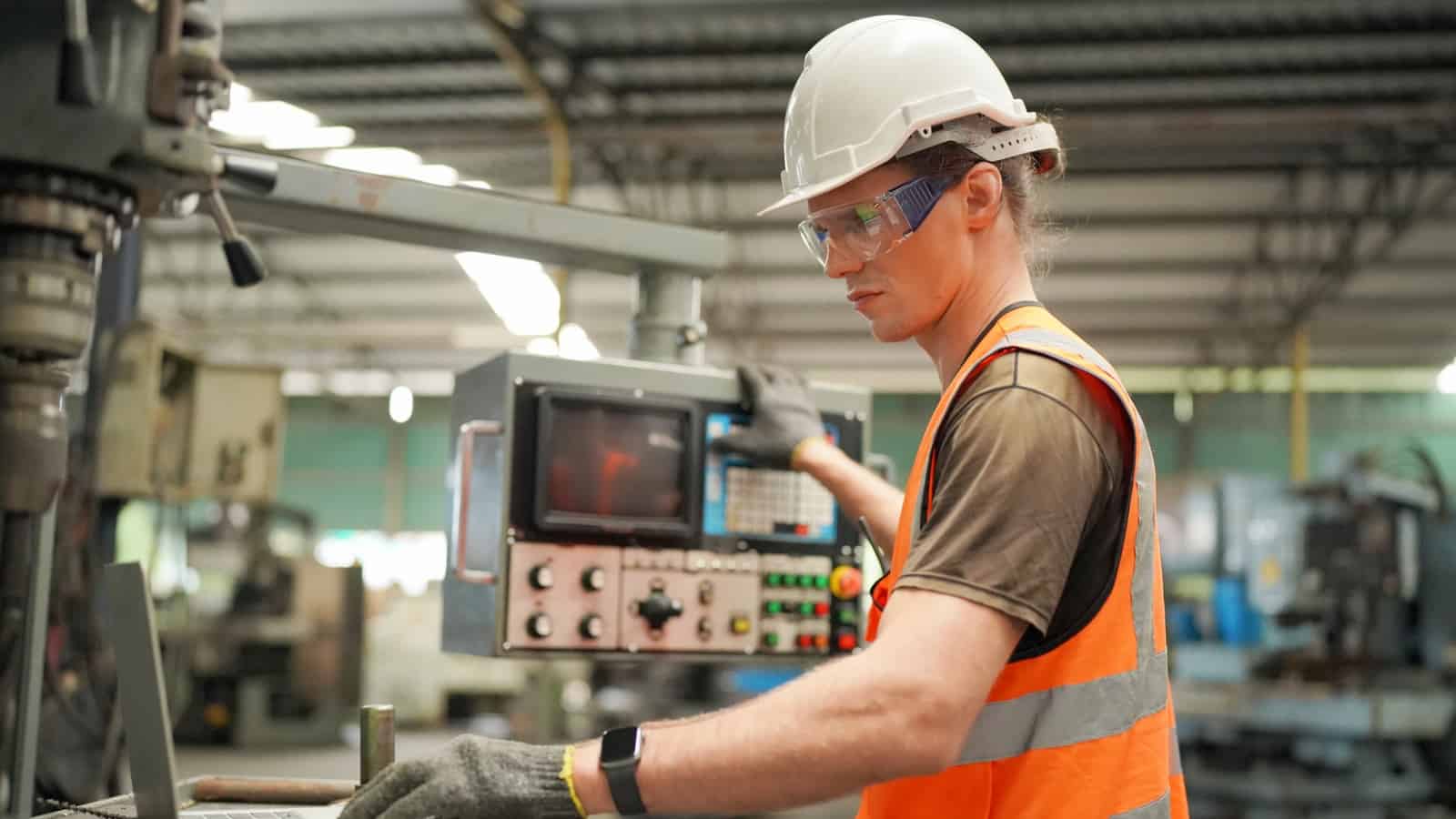
Earlier this month, Congress unveiled the bipartisan Tax Relief for American Families and Workers Act—and now it’s time it passed the legislation, the NAM recently urged congressional leaders.
What’s going on: The bipartisan tax package—a compromise between House Ways and Means Committee Chairman Jason Smith (R-MO) and Senate Finance Committee Chairman Ron Wyden (D-OR)—would restore immediate R&D expensing for businesses, reinstate full expensing (also known as 100% accelerated depreciation) for businesses’ capital investments and return the U.S. to a pro-growth interest deductibility standard.
- Thanks to the NAM’s advocacy, the House Ways and Means Committee supported moving the legislation to the House floor by a bipartisan vote of 40–3.
- A vote on the House floor is expected tomorrow or Thursday, thanks in part to the NAM’s work.
Why it’s important: “All three of these tax policies have a long history of bipartisan support and are critical to strengthening America’s global competitiveness,” the NAM, along with more than 260 other businesses and allied groups, told House Speaker Mike Johnson (R-LA), House Minority Leader Hakeem Jeffries (D-NY), Senate Majority Leader Chuck Schumer (D-NY) and Senate Minority Leader Mitch McConnell (R-KY) earlier this month.
- The policies “have enabled U.S. businesses to innovate, create [well]-paying jobs, protect our national security and remain at the cutting edge of the global economy. Restoring these provisions will have a profound impact on business investment, economic growth and job creation.”
Small businesses: The policies are particularly crucial for small- and medium-sized manufacturers, said Courtney Silver, president and owner of precision machining company Ketchie Inc. group chair of NAM Small and Medium Manufacturers Group.
- The absence of these three tax “provisions directly impacts our ability to invest in new technology, to purchase equipment and to create jobs,” she said.
- “Nearly 90% of manufacturers share similar concerns about their higher tax burden, and if left unaddressed, our companies and our teams will have a harder time securing an edge over our global competitors. … Passing this law would give companies like ours the certainty needed to plan for growth and more investments.”
What you can do: Your members of Congress need to continue to hear why it is imperative they support this tax package. Add your voice at the NAM’s Tax Action Center.
